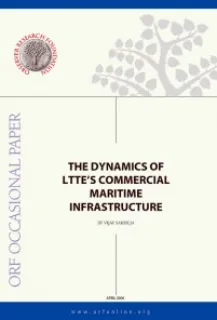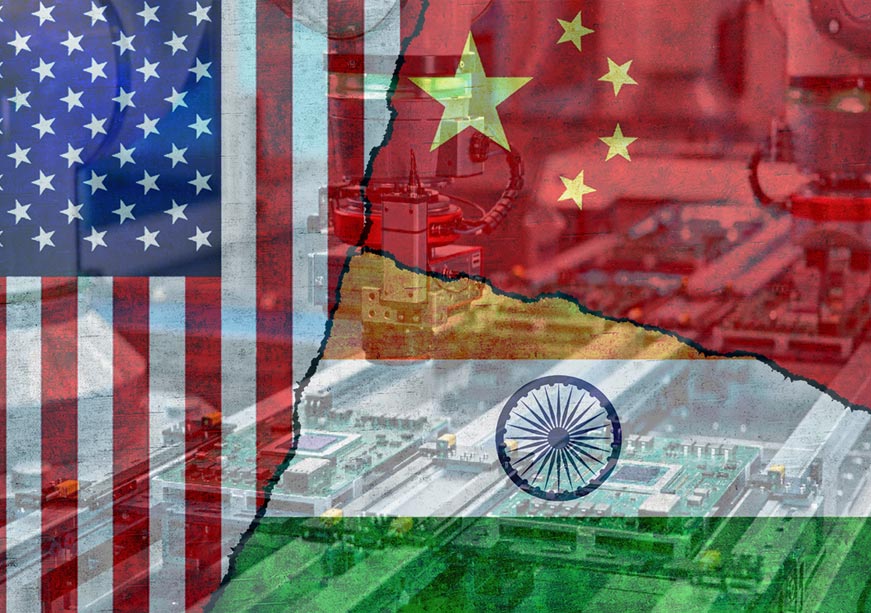From very humble beginnings, the LTTE’s maritime infrastructure has come a long way and today boasts of a sophisticated network. Its maritime assets and organisation are quite capable and can well compete with the maritime facilities of a small island state. The present-day LTTE commercial maritime infrastructure includes a fleet of merchant ships, a large number of fishing trawlers, high-speed motor launches, and professionally trained crew to steer these vessels. The LTTE may also have some vessels capable of carrying one to two shipping containers.
In the early stages, the LTTE had at its disposal a large fleet of locally made small fishing boats, trawlers and motor launches. These were used to transport domestic cargo such as food grain, building material and other general necessities of daily life. These vessels were also used to ferry LTTE personnel and military hardware, including arms and ammunition. The LTTE had also established a shipping lane from Tamil Nadu in southern India to Jaffna in northern Sri Lanka through the Palk Strait.
The 1983 anti-Tamil riots in Sri Lanka had a major impact on the Tamil community. Tamils living in Colombo and the Jaffna area began to flee the country and moved towards Tamil Nadu. Consequently, Tamil Nadu emerged as a safe haven for the Tamil refugees and the LTTE. There were strong anti-Sri Lanka feelings among the refugees. A sympathetic state government in Tamil Nadu provided the LTTE with money and land to set up training camps. Domestic conditions were also favourable to establish a network among the Indian and Sri Lankan Tamil fishermen who became an important source of strength for the LTTE. The LTTE conducted operations with the assistance of the local fishing community and enjoyed total impunity. The understanding between Indian and Tamil fishermen was such that it resulted in the Sri Lanka government sending a note of concern to the Indian government.
A Sri Lankan report highlighted that Tamil Nadu was the hub of LTTE’s maritime activity. The report unambiguously pointed out that the LTTE’s activities were flourishing with the knowledge of the political establishment of Tamil Nadu. There were 25 LTTE training camps in Tamil Nadu in the districts of Anna, Chengalpattu, Madurai, Puddukkotai, South Arcot, Salem, Thanjavur, Tiruchi and Ramanathapuram.
The LTTE’s maritime infrastructure was till then centered on small but fast vessels for operations across the Palk Bay, off Trincomalee and Batticaloa sea areas. At the same time, it had begun to explore the possibility of acquiring larger vessels too. Reportedly, the first large vessel purchased by the LTTE in 1984 was named MV Cholan. This second-hand cargo vessel was purchased from a Mumbai-based shipping magnate. The LTTE also obtained permission from the Myanmar government to establish a modest shipping base in the island of Twante located off the Irrawady delta. MV Cholan was essentially used for smuggling arms and other military requirements as chartered ships had become risky.
At about the same time, the LTTE is also known to have placed orders for construction of another vessel from a shipbuilding yard on the Kerala coast that was later identified as Kadalpura. The sudden urge to acquire its own vessels was partly driven by the fact that the LTTE wanted to have its own shipping vessels to facilitate both arms procurement as well as run its legitimate maritime commercial activity. The fleet thus increased to five or six small freighters, which were registered under the ownership of several dummy companies having their offices in Bangladesh, Thailand, Malaysia, Singapore and Hong Kong. These vessels carried timber and grain from Myanmar and during the return voyage, brought back fertilizer, cement and other bulky goods .
By the early 1990s, Phuket in southern Thailand also emerged as a port for LTTE’s commercial maritime activity. The assassination of Rajiv Gandhi in 1991 was a dramatic reversal of fortunes for the LTTE. There was a major decline in general public support for the LTTE in Tamil Nadu and this forced the LTTE to dismantle much of its infrastructure and logistics in India. Much of this was shifted to northern Sri Lanka. The LTTE could no longer rely on Tamil Nadu and Kerala for logistic support. The ruthless combing operations of Indian intelligence agencies and security forces resulted in adversarial conditions for the LTTE. The loss of Indian logistical support was the primary reason for the LTTE to augment its ocean-bound maritime fleet that could provide a reliable logistical support for transporting arms and ammunition from distant markets.
This paper examines the maritime infrastructure of the Liberation Tigers of Tamil Eelam (LTTE)—tracing the history of the development of its maritime organisation, infrastructure and strategy. The paper focuses on the salience of sea power as perceived by a violent non-state actor and provides a perspective on how non-state actors employ sea power in asymmetric conflicts. The paper also highlights the LTTE’s understanding
of the sea as an instrument of power in the strategic thinking of its leaders. The paper focuses on the impact of the post 9/11 maritime security regimes, including the Proliferation Security Initiative (PSI), the International Ship and Port Facility Security (ISPS) code and impact of the Flag of Convenience (FOC) registry on the LTTE’s fleet of ships.

 PDF Download
PDF Download



 PREV
PREV

